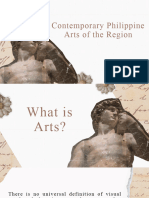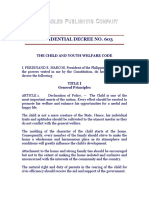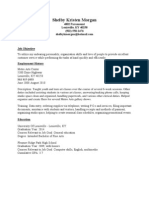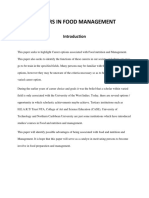0 ratings0% found this document useful (0 votes)
3 viewsArt Essay
Art Essay
Uploaded by
manufaceconsultantsessay
Copyright:
© All Rights Reserved
Available Formats
Download as DOCX, PDF, TXT or read online from Scribd
Art Essay
Art Essay
Uploaded by
manufaceconsultants0 ratings0% found this document useful (0 votes)
3 views2 pagesessay
Original Title
art essay
Copyright
© © All Rights Reserved
Available Formats
DOCX, PDF, TXT or read online from Scribd
Share this document
Did you find this document useful?
Is this content inappropriate?
essay
Copyright:
© All Rights Reserved
Available Formats
Download as DOCX, PDF, TXT or read online from Scribd
Download as docx, pdf, or txt
0 ratings0% found this document useful (0 votes)
3 views2 pagesArt Essay
Art Essay
Uploaded by
manufaceconsultantsessay
Copyright:
© All Rights Reserved
Available Formats
Download as DOCX, PDF, TXT or read online from Scribd
Download as docx, pdf, or txt
You are on page 1of 2
Art
The Essence of Art: A Multifaceted Exploration
Art, in its myriad forms and expressions, is a cornerstone of human culture and experience. It
transcends time and geography, offering a unique window into the human condition, our
values, and our aspirations. This essay delves into the essence of art by exploring its
definitions, functions, and impact on individuals and societies. By examining the diverse
roles art plays, we gain a deeper understanding of its significance in shaping both personal
identities and collective cultures.
1. Defining Art: A Complex Concept
Art is notoriously difficult to define comprehensively due to its evolving nature and the wide
range of mediums it encompasses. Traditionally, art has been viewed through the lens of
aesthetics, with a focus on beauty, form, and technique. However, contemporary perspectives
broaden this definition to include conceptual and functional aspects. Art can be a form of
personal expression, a means of communication, or a method of engaging with social and
political issues. This expansive view acknowledges that art is not limited to visual creations
like paintings and sculptures but includes performance, literature, music, and digital media.
2. The Functions of Art: Beyond Aesthetics
Art serves multiple functions that extend beyond mere visual appeal. One of its fundamental
roles is as a medium for personal expression. Through art, individuals convey their emotions,
thoughts, and experiences, providing a glimpse into their inner worlds. This personal
dimension allows for a form of self-discovery and communication that transcends language
barriers.
Art also plays a crucial role in societal and cultural contexts. It can act as a reflection of
social values, historical events, and collective memories. Throughout history, art has been
used to document and critique societal conditions, influence public opinion, and inspire
movements for change. For example, the works of artists like Picasso during the Spanish
Civil War or Banksy in contemporary street art serve as powerful commentaries on their
respective contexts.
Moreover, art contributes to cultural identity and heritage. Traditional art forms, such as
indigenous crafts or classical music, embody the values and traditions of specific cultures,
preserving and transmitting them across generations. In this way, art functions as a repository
of cultural knowledge and identity.
3. The Impact of Art: Personal and Societal Transformations
The impact of art on individuals can be profound and transformative. On a personal level,
engaging with art—whether through creation or observation—can lead to emotional and
intellectual growth. Art encourages critical thinking, enhances empathy, and fosters a deeper
understanding of diverse perspectives. For many, art provides solace, inspiration, and a sense
of connection to something greater than themselves.
On a societal level, art has the power to drive social change and shape public discourse. Art
movements and works often challenge established norms and provoke thought, leading to
shifts in societal attitudes and behaviors. Public art, such as murals or sculptures, can
revitalize communities and create spaces for dialogue and reflection. Art festivals and
exhibitions contribute to cultural vibrancy and economic development, drawing attention to
local talent and fostering creative industries.
4. The Evolution of Art in the Digital Age
The advent of digital technology has revolutionized the world of art, introducing new tools
and platforms for creation and distribution. Digital art forms, such as virtual reality, digital
installations, and online galleries, offer innovative ways to experience and interact with art.
Social media platforms provide artists with unprecedented opportunities to reach global
audiences and engage with diverse communities.
However, the digital age also presents challenges, such as issues of intellectual property and
the commercialization of art. The proliferation of digital content has made it easier to access
and share art but has also raised questions about the value and authenticity of digital
creations. As technology continues to evolve, so too will the ways in which art is created,
experienced, and valued.
Conclusion
Art is a dynamic and multifaceted aspect of human existence that encompasses personal
expression, cultural reflection, and societal impact. Its definitions and functions are diverse,
ranging from aesthetic enjoyment to profound social commentary. As we navigate the
complexities of the modern world, art remains a vital force that enriches our lives, fosters
understanding, and drives transformation. By appreciating and engaging with art, we not only
enhance our own experiences but also contribute to a richer, more vibrant global culture.
You might also like
- 2306 WMA11 - 01 IAL Pure Mathematics P1 October 2023 PDFDocument32 pages2306 WMA11 - 01 IAL Pure Mathematics P1 October 2023 PDFMh100% (4)
- Supplemental Reading 1-CPARDocument4 pagesSupplemental Reading 1-CPARAngelu MalvarNo ratings yet
- Arts 2Document1 pageArts 2akhel baroniaNo ratings yet
- The Importance of Art in SocietyDocument3 pagesThe Importance of Art in Societycapov18236No ratings yet
- The Power of Art A Journey Through Creativity Expression and InspirationDocument2 pagesThe Power of Art A Journey Through Creativity Expression and Inspirationradin alifiNo ratings yet
- Arts 1 Final PaperDocument8 pagesArts 1 Final Papermichellemariano629No ratings yet
- Influence of Art On SocietyDocument1 pageInfluence of Art On Societya8257448No ratings yet
- Visual Art First ActivityDocument2 pagesVisual Art First ActivityMark Kenneth CeballosNo ratings yet
- Cpar Module 3Document3 pagesCpar Module 3Japheth Compania TiborNo ratings yet
- Research 2Document1 pageResearch 2akhel baroniaNo ratings yet
- Reading Report 123 Act 4Document5 pagesReading Report 123 Act 4De Leon Patricia A.No ratings yet
- Ge 6Document15 pagesGe 6Chaila Jane Pasquil SabelloNo ratings yet
- The Importance of Being An ArtistDocument2 pagesThe Importance of Being An Artistmert yigidNo ratings yet
- Art Defines CultureDocument5 pagesArt Defines Culturesimbarashe chikopfaNo ratings yet
- The Role of Art in SocietyDocument2 pagesThe Role of Art in SocietyMarco ArionoNo ratings yet
- Art AppreciationDocument1 pageArt AppreciationKaela LorNo ratings yet
- Lesson 1.1 The Importance and Meaning of ArtDocument3 pagesLesson 1.1 The Importance and Meaning of ArtNicolle ImpuestoNo ratings yet
- Significance of Art in SocietyDocument2 pagesSignificance of Art in SocietyZofigan khawajaNo ratings yet
- EssayDocument3 pagesEssaydenniseescobido07No ratings yet
- Reflective Essay On Art AppreciationDocument4 pagesReflective Essay On Art AppreciationKyeien50% (2)
- The Importance of Art To SocietiesDocument4 pagesThe Importance of Art To SocietiesRewanNo ratings yet
- WoMHGwICCcQGGP0coe BqA PDFDocument5 pagesWoMHGwICCcQGGP0coe BqA PDFCedrick GrandeNo ratings yet
- Learning Insight #3Document3 pagesLearning Insight #3maribaojnbstmchtmNo ratings yet
- Arts and Humanities 1st ActivityDocument6 pagesArts and Humanities 1st ActivityCañeda AlejanioNo ratings yet
- What Is ArtDocument1 pageWhat Is Artemma abissaNo ratings yet
- Art Appreciation Notes UNIT - 1Document13 pagesArt Appreciation Notes UNIT - 1francy sharonNo ratings yet
- In The Realm of ArtDocument3 pagesIn The Realm of ArtSweetrose GonzalesNo ratings yet
- The Role of Art in SocietyDocument2 pagesThe Role of Art in SocietysimonevoicoviciNo ratings yet
- The Role of Art in SocietyDocument1 pageThe Role of Art in Societylucia.gray.crimsonNo ratings yet
- ToK Art EssayDocument3 pagesToK Art EssaymcdowbokeNo ratings yet
- Humanities The ArtsDocument3 pagesHumanities The Artsangelasanthosh431No ratings yet
- Art AppreciationDocument75 pagesArt AppreciationRheamar Angel MolinaNo ratings yet
- L Task1dcfghjDocument11 pagesL Task1dcfghjpfgpotatoNo ratings yet
- The Transformative Power of ArtDocument2 pagesThe Transformative Power of ArtAracely Samira Curo TevesNo ratings yet
- Module 1 An Overview of ArtDocument4 pagesModule 1 An Overview of ArtAngeline AdezaNo ratings yet
- Arts Impact On Political and Economic DiscouresDocument19 pagesArts Impact On Political and Economic DiscouresLaksha ChoudharyNo ratings yet
- Art in The HomeDocument8 pagesArt in The HomeSonny Boy SajoniaNo ratings yet
- Art and Culture in WorldDocument3 pagesArt and Culture in WorldpyyamberNo ratings yet
- The ProposalDocument5 pagesThe ProposaliamrowlandxNo ratings yet
- Sismaet, Learning Insight Lecture 1-9Document9 pagesSismaet, Learning Insight Lecture 1-9Sismaet Aeron Paul G.No ratings yet
- Art AppreciationDocument3 pagesArt AppreciationMikaela OngNo ratings yet
- Aap 2Document2 pagesAap 2avrillavienedelossantosNo ratings yet
- The Influence of Cultural Identity On The Creation of ArtDocument6 pagesThe Influence of Cultural Identity On The Creation of ArtMaria RodriguezNo ratings yet
- Week 1 Intro To ArtsDocument28 pagesWeek 1 Intro To Artskpop trashNo ratings yet
- Reaction PaperDocument5 pagesReaction PaperyvonneNo ratings yet
- Art AppreciationDocument16 pagesArt AppreciationDiana shayne eslaoNo ratings yet
- Introduction of Art ApriciationDocument2 pagesIntroduction of Art ApriciationRemar Jhon HernanNo ratings yet
- What Is Art? By: Marilina MaravigliaDocument8 pagesWhat Is Art? By: Marilina MaravigliaValerie Ann OpinaNo ratings yet
- ReflectionDocument11 pagesReflectionXhianDeJesusNo ratings yet
- Types and Genres of ArtsDocument21 pagesTypes and Genres of ArtsRenz Daniel R. ElmidoNo ratings yet
- MypdfDocument1 pageMypdfdanielznorton20No ratings yet
- The Role of Art in SocietyDocument1 pageThe Role of Art in Societyalyn63292No ratings yet
- Cpar - Lesson 1-3Document50 pagesCpar - Lesson 1-3danielhandig.bragaisNo ratings yet
- Cpar Characteristics and Functions Week 3Document128 pagesCpar Characteristics and Functions Week 3christianwood0117No ratings yet
- Art AppDocument2 pagesArt AppLyndsy Elaine DequitoNo ratings yet
- Historical Perspective of Arts: TopicDocument5 pagesHistorical Perspective of Arts: TopicMarivic NopreNo ratings yet
- Mark As Done: Lesson 1.2: The Assumptions of ArtDocument3 pagesMark As Done: Lesson 1.2: The Assumptions of ArtPerly CielyNo ratings yet
- Lesson 1 Overview of Humanities and ArtDocument20 pagesLesson 1 Overview of Humanities and ArtTatsuya Van RagnvindrNo ratings yet
- Why Is Art Important? The Importance of Art in Everyone's LifeDocument2 pagesWhy Is Art Important? The Importance of Art in Everyone's LifeJhuma. Rinita MetaliksNo ratings yet
- Art in The 21st CenturyDocument3 pagesArt in The 21st CenturyLhyn Liam-LameraNo ratings yet
- The New Renaissance: How Art, Culture, and Tech Are Shaping Tomorrow’s WorldFrom EverandThe New Renaissance: How Art, Culture, and Tech Are Shaping Tomorrow’s WorldNo ratings yet
- Presidential Decree No. 603, The Child and Youth Welfare CodeDocument62 pagesPresidential Decree No. 603, The Child and Youth Welfare CodeRonna Lamac-Ador100% (1)
- The Importance of Using Games in EFL Classrooms PDFDocument10 pagesThe Importance of Using Games in EFL Classrooms PDFzequiel fernandesNo ratings yet
- Course Structure Topic Learning HoursDocument4 pagesCourse Structure Topic Learning HoursCzar HamidNo ratings yet
- Shannon 2020Document2 pagesShannon 2020api-317817876No ratings yet
- Detection of License Plate If Helmet Not FoundDocument8 pagesDetection of License Plate If Helmet Not FoundIJRASETPublicationsNo ratings yet
- Integration AnswersDocument20 pagesIntegration AnswersMeng Ru KuokNo ratings yet
- Words of RemembranceDocument4 pagesWords of RemembranceJohann Emmanuel MolatoNo ratings yet
- MESA Finnie Mueller PDFDocument43 pagesMESA Finnie Mueller PDFsalmanNo ratings yet
- (ThichTiengAnh - Com) De-Thi-Thu-Thptqglan-1nam-2017-Truong-Thpt-Nguyen-Binh-Khiemquang-NamDocument23 pages(ThichTiengAnh - Com) De-Thi-Thu-Thptqglan-1nam-2017-Truong-Thpt-Nguyen-Binh-Khiemquang-NamBach Hua HuaNo ratings yet
- Resume Devi PriyaDocument3 pagesResume Devi PriyaengineeringwatchNo ratings yet
- Shelby Completed ResumeDocument2 pagesShelby Completed Resumetele645408No ratings yet
- Shoaib J BaigDocument3 pagesShoaib J BaigMaroof BaigNo ratings yet
- Team 6 - Laboratory ReportDocument7 pagesTeam 6 - Laboratory Reportjamesdlcrz07No ratings yet
- Simon and Molly Plus Hester Lesson PlanDocument7 pagesSimon and Molly Plus Hester Lesson Planapi-300269240No ratings yet
- R03.6 Guidance For Standard IVDocument22 pagesR03.6 Guidance For Standard IVBảo TrâmNo ratings yet
- Ar 2Document12 pagesAr 2Ivy Mae AninonNo ratings yet
- Understanding IELTS Academic and IELTS General TrainingDocument1 pageUnderstanding IELTS Academic and IELTS General TrainingTom LiNo ratings yet
- Entrance Exam - Outside SaranganiDocument5 pagesEntrance Exam - Outside SaranganiAriel LalisanNo ratings yet
- Second Grade ELADocument28 pagesSecond Grade ELACharlie V MorenoNo ratings yet
- Bsacore 1 M7 MonDocument3 pagesBsacore 1 M7 Monilalimngputingilaw3No ratings yet
- 5th National Assembly of PakistanDocument13 pages5th National Assembly of PakistanNighat ParveenNo ratings yet
- Scholarship Application FormDocument2 pagesScholarship Application FormInjae Kim100% (1)
- G11 SERENITY SURVEY LEARNERS READINESS - Rev1Document155 pagesG11 SERENITY SURVEY LEARNERS READINESS - Rev1Apples Ermida BanuelosNo ratings yet
- OBSERVATION Finding Answers Through Data CollectionDocument20 pagesOBSERVATION Finding Answers Through Data CollectionMaKenJi38% (13)
- Careers in Food ManagementDocument52 pagesCareers in Food ManagementralieghNo ratings yet
- Sap AbapDocument2 pagesSap AbapAlfaaz Hosayn50% (2)
- What Is A ResumeDocument28 pagesWhat Is A ResumeDania Alccahuaman FloresNo ratings yet
- RPS Tefl 1Document8 pagesRPS Tefl 1Erma DomosNo ratings yet
- Hedu e 111 2010Document33 pagesHedu e 111 2010Modi MitulkumarNo ratings yet

























































































